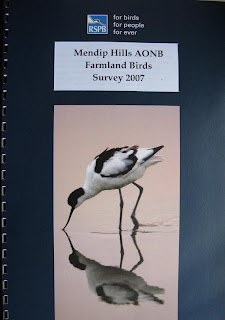Now I'm a bit of a fan of churchyards. Apart from being interested in reading the headstones and musing on those people's lives, being uncultivated for Centuries, churchyards are a repository for Wildlife, and in cities can have remnant interest from the times when the church stood in countryside. St Mary's was no exception, being part of the Dorset Wildlife Trust Living Churchyards project.
But let me begin with the light. The afternoon sun was strong, the interior of the church, cool and dark. The contract........ well just stunning. Photographs can never really do that contrast justice, but here's a couple to whet the appetite.
Back outside though in the hot sun, the churchyard was alive with insect life; loads of Large White, I even spied a Brimstone, which must be a second brood. And of course the ubiquitous Speckled Wood.
What would we do without Yew trees in Churchyards? Strange to think many are older than the churches themselves, as many were planted by Pagans, or at least on sacred sites of the pagans, which were then adopted by the Church. Yew is much maligned in my mind, seen as sinister as it is poisonous to some animals and has connotations with dark doings. But I love it, and it is a native tree. Look at the berry below, simple, colourful and exquisite.... don't you just want to eat it. But don't!!
This Yew also had 2 Goldcrests in there somewhere, I could hear then calling, and occasionally see their shadow but they eluded me, or at least the camera. However it was while faffing about trying to see these wonderful birds that my ears became aware of mewing, not from a cat, but a Buzzard. It was quite close too, but I couldn't see anything in the sky. Wandering about the churchyard, I finally spotted the female on top of a very sick looking 100 foot tall Scots Pine
She wasn't mewing, the male was somewhere but where? Just then he flew off from another tree, the female joined in and the pair flew around and around the Church for ages, mewing and just had the appearance of enjoying the heat and the warmth and a nice rising thermal.
I love skylarks on the wing in the summer, but equally a hot August day, the air heady with heat, clear blue skies and the mewing of Buzzards overhead... I've seen the light and heard the call!!
~~~
On a separate issue and to finish today's posting, as an ex-librarian, some recently published book news, and a bit of flagrant name dropping.
Friend and colleague, Master Stephen Moss has just produced another tome, A Sky full of Starlings, recounting his first year relocating from London to the Somerset Levels. I haven't read it yet, but apparently my name's in there somewhere. I'm trying to find an unsigned copy, they're more expensive. Anyway I may see Mr Moss later today so will investigate.
Friend, and fellow fan of Show of Hands, Gail McKenzie, along with her partner Rob Cousins who took the photographs, have spent the last year working on Go Slow England, Alastair Sawday's latest book covering where to stay to experience glorious organic and slow food. Now that's a job, being paid to stay in B&B's while writing a book. It's worth reading just for Rob's photographs... err!
Finally, I'm confused. Recently I was sent the final report of the 2007, Mendip Farm survey, of which I and about 40 others tramped across the Mendips in the spring and summer of last year. The report concludes that intensification of the pastoral farming system is having a negative effect on bird numbers and diversity (only a single breeding Lapwing pair recorded), and yes, we've lost the Cirl Bunting. I also think personally as the Mendips are a playground for Bristol, there is a lot of disturbance, especially for ground nesters. This wasn't touched upon, as the report is really the starting block for further action towards target species.
But why am I confused? Well this. Why was an Avocet used for the front cover? I appreciate it is the logo of the RSPB, but to my knowledge Avocets have never been recorded on the Mendips. A bit like having herds of Wildebeest on a Torquay postcard.
Picky I know, but why not a Skylark, or Barn Owl. Ahh well !!










Your pictures of the church are superb! Beautiful!
ReplyDeletechurches can be superb for wildlife. I've seen loads of Spotted Flycatcher's in them.
ReplyDeleteThank you Oldcrow
ReplyDeleteAnd lets not forget bats in the belfry Pete
Am back again... love the pictures of the church in particular - the light in that door way is beautiful! If you're ever down on the Lizard in Cornwall - you should take a look at Gunwallowe Church - (where we got married) - perched on the edge of the beach - the tiniest church but such a stunning setting... will visit again soon Miranda
ReplyDeleteHi Miranda, thanks for the photo comment, and what a fabulous place to get married. I know it, but a very long time since my visit.
ReplyDelete